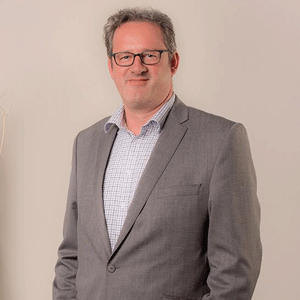THANK YOU FOR SUBSCRIBING

Darek Koper, Manager, Auckland Transport
Fleet Management in public transport is about specifying technical needs, procurement, and managing buses. Before buses begin operating services, they must meet the vehicle quality standards set by Auckland Transport. These regulate safety, capacity, customer comfort, branding requirements, and on-bus technology to provide real-time tracking and customer information.
Urban buses are predominantly diesel vehicles with about 3 million of them globally. Tail-pipe emissions of the various oxides of nitrogen and particulate matter contribute to air pollution. Replacing these with low or zero tail pipe emission vehicles will bring significant benefits to the environment and health of the local population.
A fleet of more than 1300 diesel buses services Auckland’s transport system. Auckland’s bus fleet will be one of the youngest in the world by the end of 2018 when an entirely new network has been rolled out across the region, this new network also put in place new contracts with bus operators and requires buses to meet a higher environmental standard. Auckland is one of 20+ cities in the world with policies committed to not buying more diesel buses, and has zero-emission targets for buses. Auckland is one of twelve cities that signed the 2017 C40 Fossil Free Streets declaration, pledging to buy only zero-emission buses from 2025. This presents a challenge to manage the bus fleet going forward.
The transition from diesel to zero-emission buses depends on major cities and their operators deciding to purchase large quantities of battery electric buses and/or converting diesel buses into plug-in electric power. Improving technology and decreasing costs of batteries are the key factors to trigger this technological transition. It will take serious investment and fleet management to make the transition to sustainable power happen.
The upfront costs of battery-electric buses are significant. More than 385,000 electric buses operate around the world, with 99 percent of them in China. Most purchases are subsidized by funding incentives from central governments and other agencies.
Auckland is one of twelve cities that signed the 2017 c40 fossil free streets declaration, pledging to buy only zero-emission buses from 2025
The variety of makes, models and ages of the current Auckland bus fleet makes retrofitting them to battery electric or plug-in hybrid expensive because unique designs are required. Existing diesel fleets expect to work up to 20 years, as permitted under the NZTransport Agency’s Requirements for Urban Bus. To protect their capital investment and maximize their return on investment, many bus operators have started to investigate converting their diesel fleet to hybrid, plug-in hybrid or full electric buses.
Auckland uses an outsource model, where private contractors supply public transport services. The tenure of contracts ranges from six to 12 years. There is a need for collaboration between transport authorities and private operators, to understand the benefits of moving to all-electric fleet. Two electric buses, purchased by Auckland Transport with funding from The Energy Efficiency and Conservation Authority are being trialed in Auckland’s city center. This trial will measure how electric buses handle Auckland’s geography, the cost of operating electric buses compared to diesel vehicles, their impact on the power grid and charging infrastructure.
There are many bus charging systems on the market. Most are overnight, maximizing the down time available for charging,and taking advantage of lower electricity costs. Some even come with technology to assist in managing the parking and sequencing of bus charging to meet the following day’s operational requirements.
As we move beyond the trial phases of electric bus fleets, decision-makers will increasingly rely on operational data. Bus operators and contracting transport authorities need to understand efficient charging and monitoring of charging costs. This will ensure that an electric fleet is delivering higher efficiency and lower costs compared to a diesel fleet.
Senior-level IT buyers and decision-making bus operators need to know the benefits of charging systems when purchasing an electric bus fleet. Such systems will also assist in predicting the impact on future infrastructure projects. Enhancements to local electricity suppliers and power grids may be required. Local depots may change to cope with localized power demands when multiple buses re-charge at the same time. Localised, high power consumption has a different impact on the grid compared to many car-charging stations spread around the city and in electric car owners’ garages.
Future fleet management and telematics systems will need to provide live updates back to depots about battery power, electricity usage, and re-charge levels achieved on-route if opportunity charging supplements depot charging. This enables proactive power management across the fleet.
The challenge and opportunity for IT and technology providers are to make the tools and systems available. This is crucial for public transport players and key stakeholders, who are assessing electric buses as a part of the great transition to electric power and sustainability.













